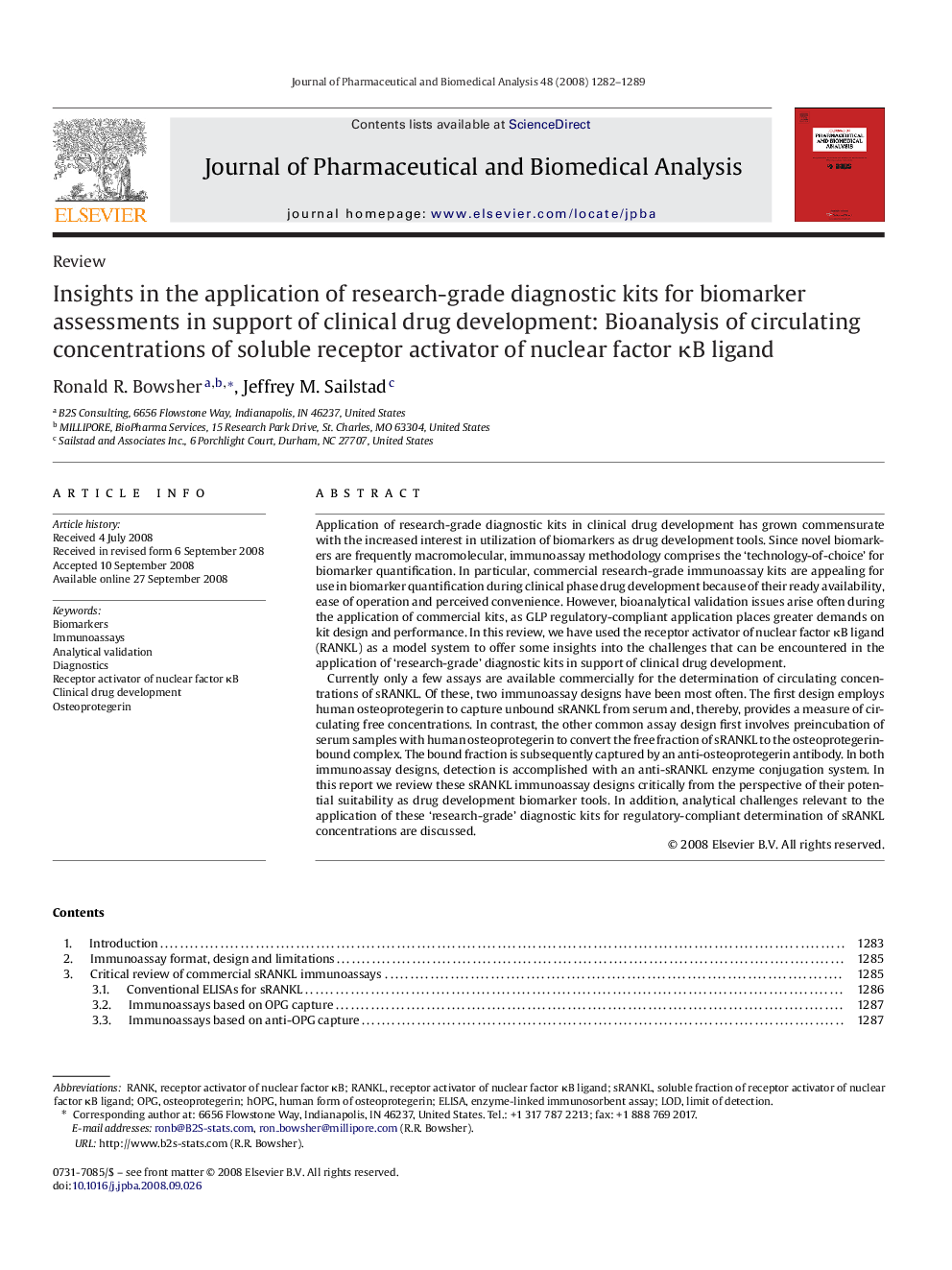| کد مقاله | کد نشریه | سال انتشار | مقاله انگلیسی | نسخه تمام متن |
|---|---|---|---|---|
| 1223819 | 967902 | 2008 | 8 صفحه PDF | دانلود رایگان |

Application of research-grade diagnostic kits in clinical drug development has grown commensurate with the increased interest in utilization of biomarkers as drug development tools. Since novel biomarkers are frequently macromolecular, immunoassay methodology comprises the ‘technology-of-choice’ for biomarker quantification. In particular, commercial research-grade immunoassay kits are appealing for use in biomarker quantification during clinical phase drug development because of their ready availability, ease of operation and perceived convenience. However, bioanalytical validation issues arise often during the application of commercial kits, as GLP regulatory-compliant application places greater demands on kit design and performance. In this review, we have used the receptor activator of nuclear factor κB ligand (RANKL) as a model system to offer some insights into the challenges that can be encountered in the application of ‘research-grade’ diagnostic kits in support of clinical drug development.Currently only a few assays are available commercially for the determination of circulating concentrations of sRANKL. Of these, two immunoassay designs have been most often. The first design employs human osteoprotegerin to capture unbound sRANKL from serum and, thereby, provides a measure of circulating free concentrations. In contrast, the other common assay design first involves preincubation of serum samples with human osteoprotegerin to convert the free fraction of sRANKL to the osteoprotegerin-bound complex. The bound fraction is subsequently captured by an anti-osteoprotegerin antibody. In both immunoassay designs, detection is accomplished with an anti-sRANKL enzyme conjugation system. In this report we review these sRANKL immunoassay designs critically from the perspective of their potential suitability as drug development biomarker tools. In addition, analytical challenges relevant to the application of these ‘research-grade’ diagnostic kits for regulatory-compliant determination of sRANKL concentrations are discussed.
Journal: Journal of Pharmaceutical and Biomedical Analysis - Volume 48, Issue 5, 15 December 2008, Pages 1282–1289